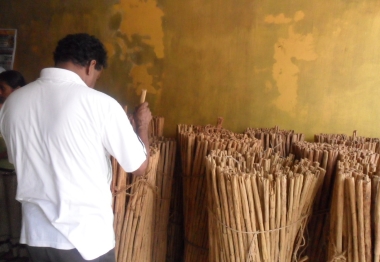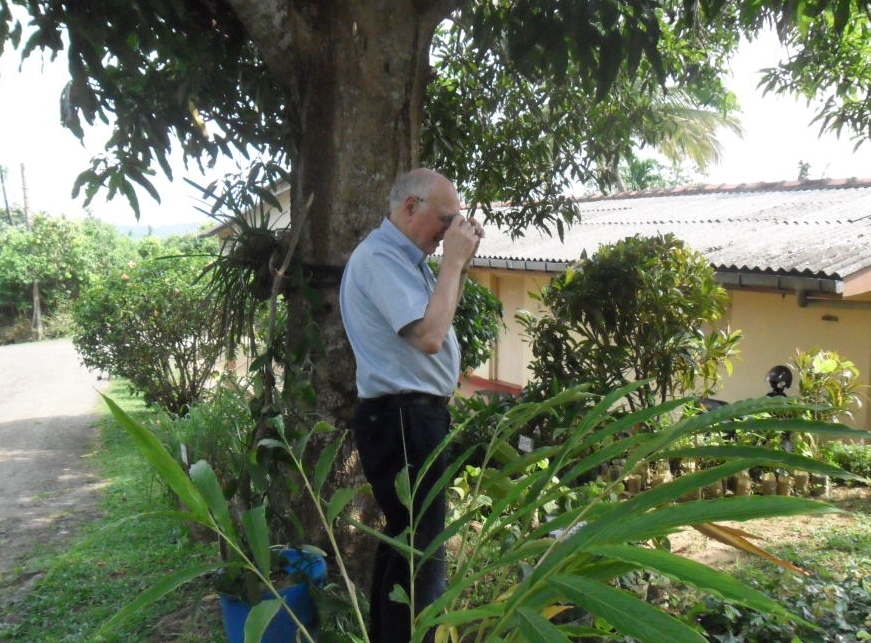Spice Market
A seasoned expert helps Sri Lanka’s cinnamon industry
Sri Lanka produces some of the highest regarded cinnamon in the world. This smallholder crop packs quite a punch. Ceylon cinnamon, which comes from a tree native to Sri Lanka, has been shown to lower blood sugar in people with diabetes without the risk of liver damage, which can occur with high doses of the related cassia cinnamon that is often sold in grocery stores. Ceylon cinnamon also has a distinct flavor profile that is preferred by some consumers, including those in the United States and Mexico.
 |
| Sri Lanka produces some of the world’s finest cinnamon. |
The Sri Lankan cinnamon industry has the potential to reap economic benefits for as many as 1.5 million people’in a country of 20 million. However, years of tumult caused by civil war created a bleak environment for Sri Lanka’s economy, and the opportunities for the cinnamon industry to leverage its economic potential was stifled.
The Facilitating Economic Growth Program (2009-2014) emerged in this context, launching only months after the civil war ended. The goal of the program was to revitalize Sri Lanka’s post-conflict economy through rapid, targeted technical assistance to businesses, industries, and business-related government agencies. Through this USAID-funded program, IESC fielded a mix of consultants and volunteer experts on short-term assignments to the country.
One such expert on the program was Harold (Hal) Handley. Handley is a former vice president of McCormick Spices, and he was able to play an integral role in improving Sri Lanka’s cinnamon industry by working with The Spice Council, an organization which seeks to make Sri Lanka’s spice industry one of the best and most competitive in the world. The Spice Council officially launched the ‘Pure Ceylon Cinnamon’ brand in 2011, making it the second national brand for an agricultural product, after ‘Ceylon Tea’. Handley tapped into his own extensive professional network and expertise to facilitate business connections for the Spice Council and worked to create a promotional strategy to increase the visibility of the Ceylon cinnamon brand in the U.S. market.
‘The 2010 bilateral trade agreement between the United States and Sri Lanka really opened up the door for us to re-introduce Ceylon cinnamon in the United States,’ Handley said. The successful marketing strategy for cinnamon improved Sri Lanka’s image in North American markets and increased exports and the potential for sustainable growth.
 |
| IESC volunteer expert Hal Handley, a former executive at McCormick Spices, carefully inspects cinnamon plants in Sri Lanka. |
IESC has been fielding expert volunteers like Hal Handley for more than 50 years. Skilled and seasoned volunteers are able to take a 360-degree view of a company and the problem. They apply years of experience and a passion for the industry to work to solve the real problem, even if it falls outside the scope of work they were assigned to do.
In fact, that’s what happened with Handley and his cinnamon assignment. The Sri Lanka program had engaged another technical expert to train members of the Spice Council on the FDA’s Food Safety Modernization Act (FSMA) of 2011, the largest reform of U.S. food safety and contamination prevention policies in more than 70 years. Even though it was outside the scope of his work, Handley pitched in on this effort by starting an awareness campaign to make sure that all cinnamon stakeholders knew about the sweeping changes.
The efforts to introduce Ceylon cinnamon to the global market had the added benefit of encouraging the Spice Council become more knowledgeable about the their value chain. Handley played an instrumental role in opening their eyes to the current cinnamon markets and what happens to cinnamon once it leaves the warehouse. Everyone from the home growers up to the large-scale exporters benefited from this support and a conducive environment for future accelerated growth.

